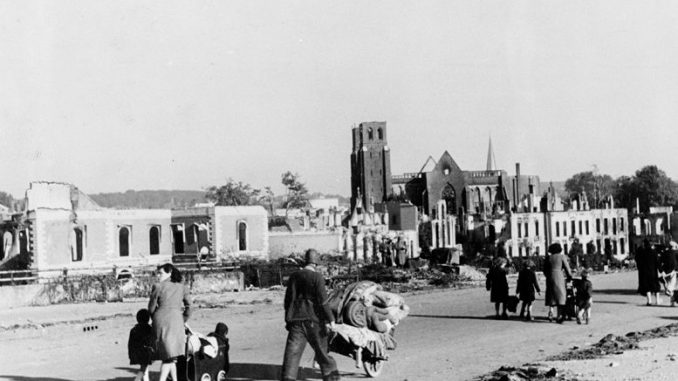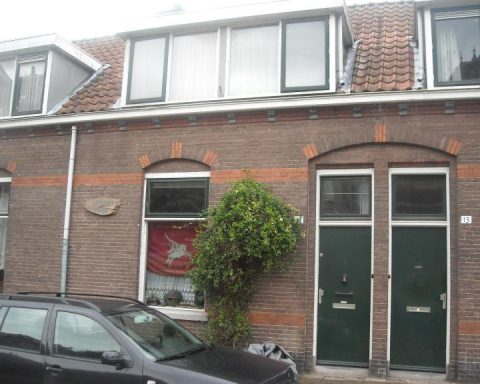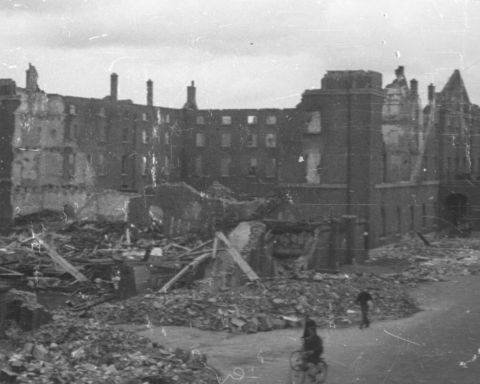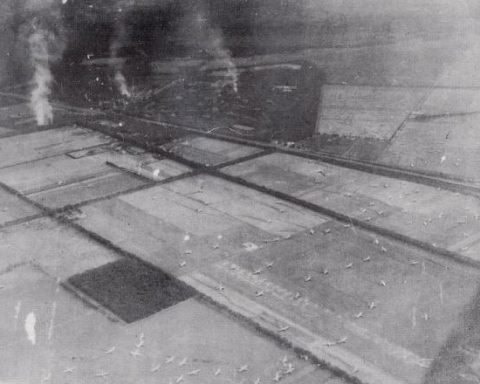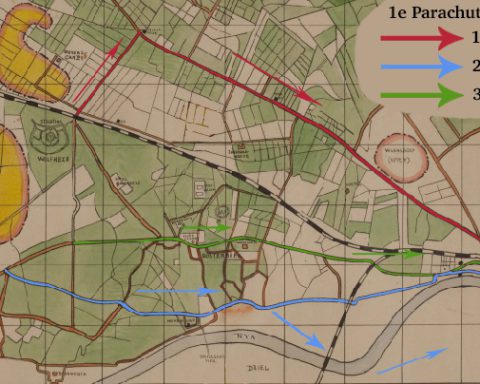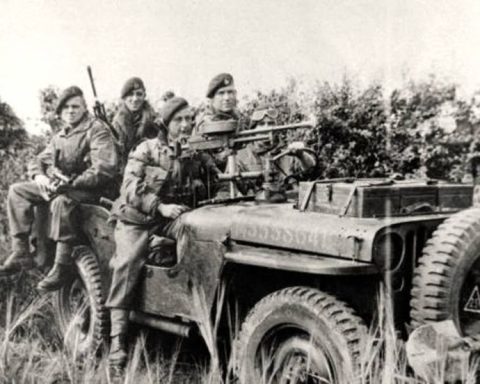Arnhem was evacuated after the Battle of Arnhem. But the inhabitants of Arnhem South already had to evacuate while there was still heavy fighting in and around the city.
By order of the German occupier, Arnhem South had to evacuate earlier. On Thursday, September 21, all residents of Arnhem south of the Rhine were told to leave their home as soon as possible.
Malburgen Oost
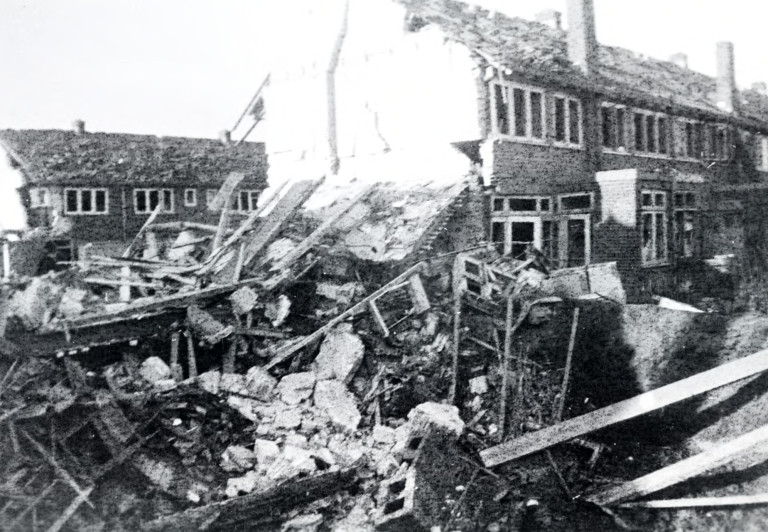
Nowadays haf of the residents of Arnhem lives south of the Rhine. But in 1944 Arnhem South was just a small neighbourhood. Malburgen East and a small piece of Malburgen West. It was no more than that.
From the beginning of the fighting on Sunday September 17, Arnhem South was isolated from the rest of the city. The north side of the bridge was occupied by British troops. The southern ramp was held by Germann forces. Arnhem North had become unreachable due to the fighting.
There were no other connections to the city. The ship’s bridge, which had been restored to its former glory in the first years of the war because the Dutch army had blown up the Rhine Bridge on 10 May 1940, had been dismantled.
The Germans controlled the area south of the Rhine to Nijmegen. In Nijmegen, American soldiers were still engaged in a fierce battle to conquer the Waal Bridge. Arnhem South was literally between two fires.
Evacuation!
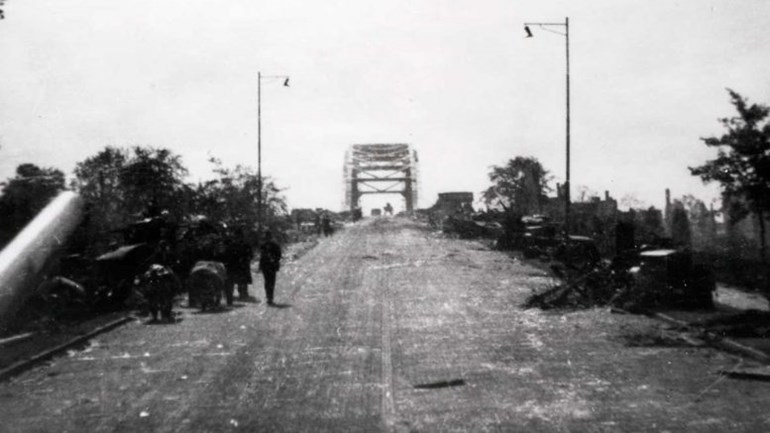
The photo above was taken on Thursday September 21, 1944 by the German soldier Karl Heinz Kracht, seated on a German tank. Evacuées from Arnhem South run north across the Rhine Bridge.
Now that the Germans were back in control of the Rhine Bridge, they immediately took measures. West of Arnhem there was still hard fighting between British and Germans, but the British were pinned in Oosterbeek.
South of Arnhem it was a different story. The Americans had captured the Waal Bridge there on Wednesday evening, September 20. In an attempt to stop the Americans, German tanks were immediately sent south across the Rhine Bridge.
The Germans expected that the Americans would advance to Arnhem and for that reason all residents of Arnhem South were told to leave their homes.
If it came to fighting on the south side of the Rhine Bridge, civilians would get in the way at best and help the Allies at worst.
What mainly attracts attention in the photo are the wrecks of the German vehicles that were shot here on Monday September 18, 1944 by British paratroopers led by Colonel John Frost.
An armored SS column led by the German Hauptsturmführer Viktor Eberhard Gräbner had tried to force a breakthrough via Arnhem South by attacking the British positions over the Rhine bridge.
The Germans were chopped. Almost the entire German column was destroyed by the British.
To the north
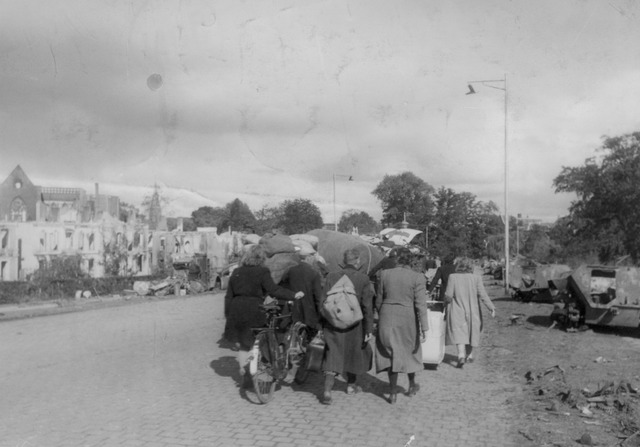
Many residents of Arnhem South chose to go to Arnhem North via the Rhine Bridge. There, a few days after their previous evacuation, they were told to evacuate again.
On September 23, the Germans announced that on Monday September 25, all inhabitants of Arnhem must have left the city.
Not all residents of Arnhem South chose to evacuate to Arnhem on September 21. Nijmegen was supposedly out of the question because of the fighting, but there were also residents of Malburgen who chose Elst or Driel, a couple of miles south and west of Arnhem South.
Residents of Malburgen who evacuated to Driel were confronted that same day with the landings of the Polish paratroopers who came to support the British in Oosterbeek.
But like the people who had fled to Elst, they were liberated that week by the Allied ground forces.
But until the liberation in April 1945, both Elst and Driel remained front areas. Dozens of civilian casualties occurred in both places during the last month of war as a result of German artillery barrages.
Destroyed Arnhem
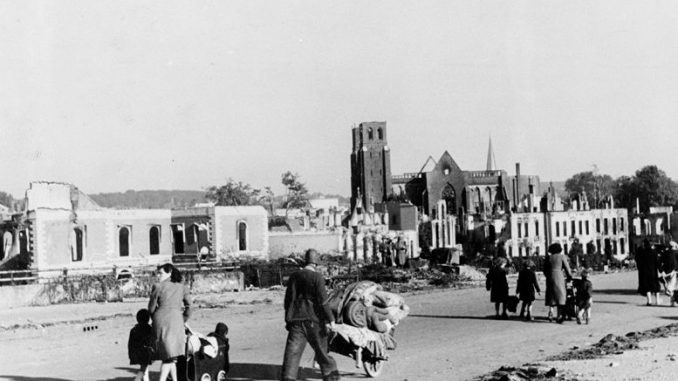
Evacuées walk from Arnhem South across the northern bridge ramp with fully loaded handcarts with belongings.
The photo clearly shows how much fighting took place on and around the Rijnbrug during the Battle of Arnhem. The photo was taken on September 21, before the Allies bombed the city center of Arnhem.
The destruction in the photo is a direct result of the fighting that the British fought at the Rhine Bridge.
All the houses visible in the photo had been occupied by British airborne troops the days before.
Not much is left of the Walburgis church. The church caught fire during the fighting after a German fighter plane, a Focke Wulf 190, crashed into one of the towers.
The German aircraft had attacked the British position from a low altitude during the fighting around the bridge. It has always remained unclear whether the German aircraft flew against the church as a result of British fire or whether it was the pilot’s mistake.
As soon as possible towards Nijmegen
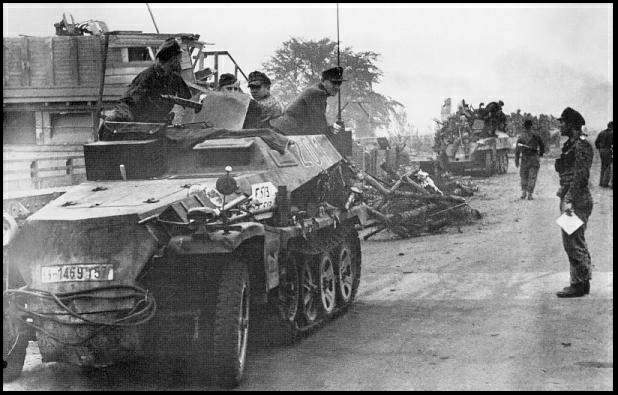
Now that the Germans were able to use the Rhine Bridge again on Thursday 21 September, as many troops and tanks as possible were sent by the Germans towards the Allies near Nijmegen. These were troops of the 10th SS Armored Division.
The above photo was taken on the ramp of the Rijnbrug. The damage from the fighting from the previous days is clearly visible.

